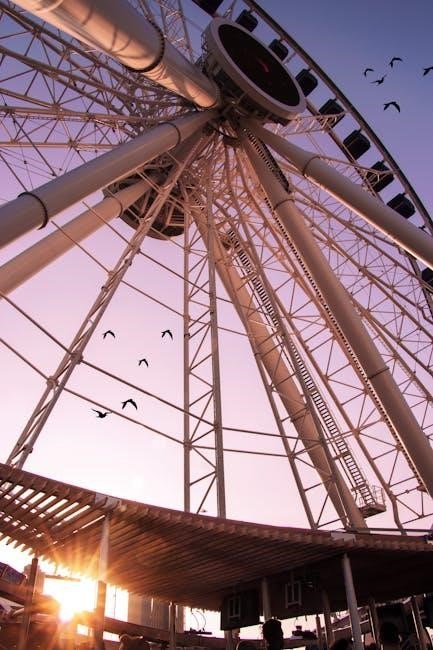
birds of illinois field guide
Illinois is a key region for birdwatching, hosting over 459 species. Field guides help identify birds by color, habitat, and behavior, aiding conservation and enthusiasts alike.
Overview of Bird Diversity in Illinois
Illinois boasts a rich avifauna, with over 459 species documented. Its strategic location along migration routes attracts a wide variety of birds, from waterfowl to songbirds. The state’s diverse habitats, including wetlands, forests, and grasslands, support both resident and migratory species. This biodiversity makes Illinois a fascinating destination for birders, with field guides proving essential for identifying species based on plumage, behavior, and seasonal presence.
Importance of Field Guides for Bird Identification
Field guides are indispensable for identifying Illinois birds, offering detailed descriptions, images, and organization by color or habitat. They simplify recognition of species, especially for beginners, by highlighting key features. These resources often include range maps and behavioral insights, enhancing birding experiences. By categorizing birds logically, field guides make it easier to spot and learn about Illinois’ diverse avifauna, whether in wetlands, forests, or backyards.
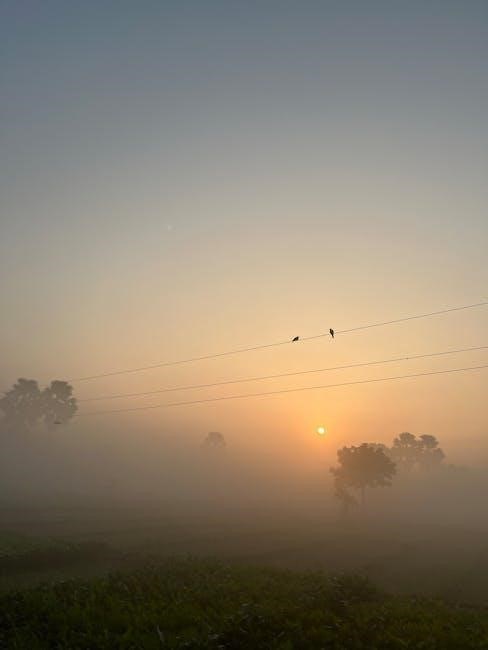
Classification of Birds in Illinois
Birds in Illinois are classified by color, habitat, and behavior, with over 450 species documented, aiding enthusiasts and researchers in understanding the state’s rich avifauna.
Types of Bird Species Found in Illinois
Illinois hosts over 450 bird species, ranging from waterfowl like ducks and geese to songbirds, raptors, and shorebirds. Common species include the American Robin, Red-winged Blackbird, and Sandhill Crane. Migratory birds like warblers and tanagers pass through, while year-round residents such as cardinals and sparrows thrive. The state’s diverse habitats support a wide variety of birdlife, making it a vibrant destination for birdwatchers and researchers alike.
Seasonal Variations in Bird Populations
Illinois experiences notable seasonal shifts in bird populations due to migration. Spring brings warblers, tanagers, and orioles, while summer sees nesting species like hummingbirds and kingbirds. Fall migration introduces shorebirds and waterfowl, with species like sandpipers and ducks passing through. Winter attracts hardy birds such as snow buntings and snowy owls, while year-round residents like cardinals and chickadees remain consistent. These seasonal changes offer diverse birding opportunities throughout the year.

Identifying Birds by Color
Birds in Illinois can be identified by their plumage colors. Field guides organize species by color, making it easier to quickly pinpoint birds like yellow warblers or red cardinals.
Organizing Birds by Plumage Color for Easy Identification
Organizing birds by plumage color simplifies identification, especially for beginners. Field guides categorize species like yellow warblers or red cardinals into color-based sections, making it easier to match sightings. This method leverages the most noticeable feature of birds, providing a practical approach for quick recognition. By focusing on color, birders can narrow down species efficiently, enhancing the overall bird-watching experience in Illinois.
Common Color Patterns in Illinois Birds
Illinois birds display a wide range of plumage colors, from vibrant yellows and deep blues to earthy browns and striking reds. Common patterns include the bright yellow of the American Goldfinch, the bold red cap of the Northern Cardinal, and the iridescent blue of the Indigo Bunting. These color variations not only enhance identification but also play roles in mating, camouflage, and species recognition, making them vital for birders and field guide organization.
Bird Migration Patterns
Illinois lies on major migration routes, with birds traveling through the Mississippi and Central Flyways. Spring and fall migrations bring diverse species, peaking in April and October.
Migration Routes and Timings in Illinois
Illinois is a critical stopover on the Mississippi and Central Flyways, with peak migrations in spring (April) and fall (October). Birds like warblers and waterfowl rely on the state’s wetlands and forests for rest and refueling. Weather and habitat availability significantly influence timing and route choices, making Illinois a dynamic hotspot for observing diverse species during their journeys.
Challenges Faced by Migrating Birds
Migrating birds encounter numerous challenges, including habitat loss, climate change, and human-made obstacles. Illinois birds face threats like urbanization, which disrupts natural habitats, and collisions with buildings or wind turbines. Climate shifts alter migration timing, mismatches with food availability, and breeding seasons. These challenges underscore the need for conservation efforts to protect critical stopover sites and mitigate human impacts on migratory patterns.
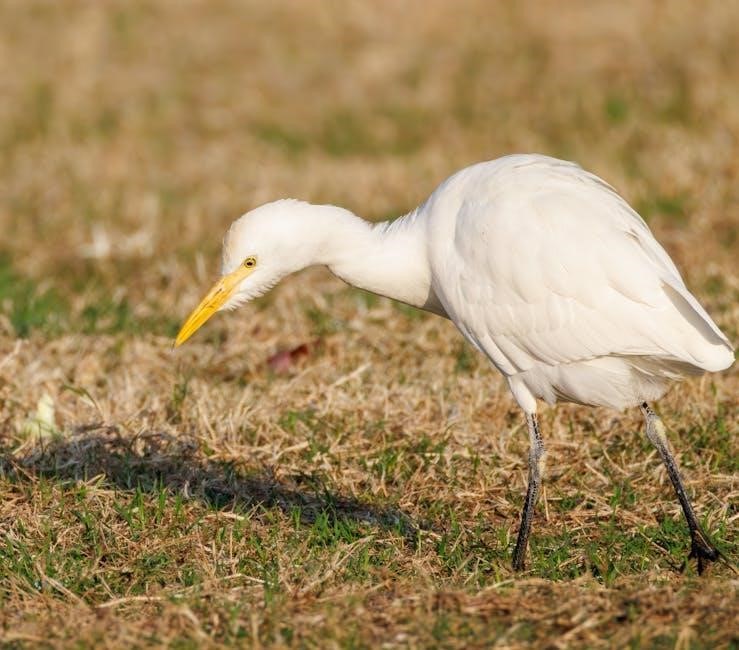
Bird Habitats in Illinois
Illinois offers diverse habitats, including wetlands, forests, and grasslands, providing essential food and shelter for various bird species, supporting their survival and breeding activities.
Wetlands, Forests, and Grasslands as Bird Habitats
Illinois’ diverse bird habitats include wetlands, forests, and grasslands, each supporting unique bird species. Wetlands attract waterfowl and shorebirds, while forests provide refuge for migratory songbirds and resident woodpeckers. Grasslands are vital for ground-nesting birds like sparrows and meadowlarks. These ecosystems offer essential breeding, feeding, and migratory stopover sites, ensuring the state’s rich avifauna thrives.
Urban vs. Rural Bird Habitats
Urban and rural areas in Illinois offer distinct bird habitats. Cities attract species like pigeons and sparrows, adapting to human-altered environments, while rural landscapes host grassland birds and raptors. Urban birds face challenges like window collisions, whereas rural birds contend with habitat loss. Green spaces in cities and vast open fields in rural areas provide crucial refuges, maintaining biodiversity across Illinois’ varied landscapes.

Bird Behavior and Social Interactions
Birds in Illinois exhibit complex social behaviors, including flocking for protection and foraging in groups. Communication through songs and calls is vital for mating and territorial defense.
Nesting and Breeding Habits of Illinois Birds
Illinois birds exhibit diverse nesting and breeding habits. Many species build cup-shaped nests in trees or shrubs, while others use cavities or ground nests. Breeding typically occurs in spring and summer, with pairs forming during courtship displays. Some birds, like waterfowl, lay eggs in vegetative cover, while others, such as woodpeckers, excavate nesting sites. Monogamous pairs are common, though cooperative breeding occurs in species like American rooks. This diversity reflects Illinois’ varied habitats and species adaptability.
Foraging and Feeding Behaviors
Illinois birds exhibit varied foraging strategies, adapting to their habitats and diets. Seed-eating species like sparrows forage on the ground, while woodpeckers extract insects from tree bark. Hummingbirds rely on nectar, using their long beaks to feed from flowers. Birds of prey hunt actively, seeking small mammals or other birds. Waterfowl dive or dab for aquatic plants and invertebrates. These feeding behaviors highlight the diversity of Illinois’ avifauna and their ecological roles in the state’s ecosystems.
Conservation Status of Illinois Birds
Several Illinois bird species face endangerment due to habitat loss and climate change. Conservation efforts focus on protecting key habitats and addressing human-induced threats to bird populations.
Endangered and Threatened Bird Species
Illinois is home to numerous bird species, with several facing endangerment. Habitat loss, climate change, and pollution threaten many birds. Conservation efforts focus on protecting habitats and addressing human impact. Collaborative initiatives between organizations and policymakers aim to safeguard these species. Public awareness and education play a crucial role in their survival, ensuring Illinois’ rich birdlife continues to thrive effectively.
Human Impact on Bird Populations
Human activities significantly influence Illinois bird populations. Habitat destruction, pollution, and climate change disrupt ecosystems, threatening bird diversity. Urban expansion and agricultural practices reduce natural habitats, while pesticides affect food sources. Climate change alters migration patterns and breeding cycles. Conservation efforts, such as habitat restoration and eco-friendly practices, are essential to mitigate these impacts and protect avian populations for future generations.
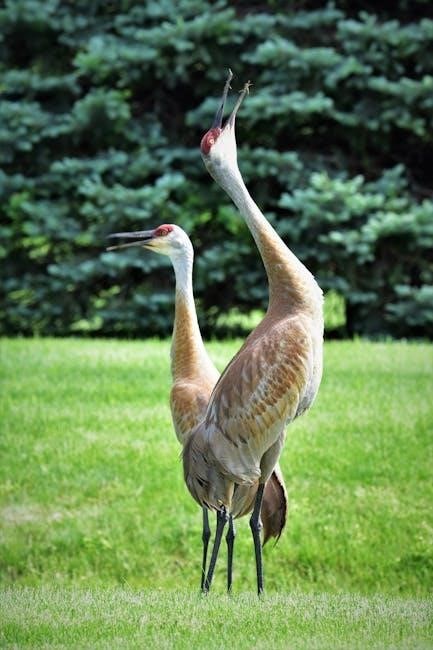
Birding Hotspots in Illinois
Illinois offers exceptional birding locations, including Bellrose Nature Preserve and Montezuma National Wildlife Refuge, attracting diverse species and enthusiasts for unique bird-watching experiences statewide.
Popular Bird-Watching Locations
Illinois boasts renowned birding sites like Montezuma National Wildlife Refuge, Bellrose Nature Preserve, and Chautauqua National Wildlife Refuge. These areas attract migratory and resident species, offering diverse birding experiences. Montezuma is a hotspot for waterfowl, while Bellrose is ideal for shorebirds. Chautauqua’s wetlands draw herons and egrets, making these locations must-visit destinations for enthusiasts seeking to spot Illinois’s rich avifauna.
Best Times for Birding in Illinois
Spring (March–May) and fall (August–October) are peak migration seasons, offering prime birding opportunities. Summer months highlight breeding species, while winter attracts waterfowl and sparrows. Visit wetlands during spring for shorebirds and waterfowl, forests for warblers, and prairies for grassland species. Fall brings raptors and songbirds, while year-round residents provide consistent sightings. Timing your visits during these periods maximizes encounters with Illinois’s diverse avifauna.
Bird Songs and Calls
Bird songs and calls are vital for identification, especially for hidden species. Learning these vocalizations helps recognize birds by ear, enhancing field observations and birding experiences significantly.
The Role of Bird Songs in Identification
Bird songs and calls are essential for identifying species, especially when birds are hidden from view. By learning vocalizations, birders can recognize birds in dense habitats or at night. Distinctive songs, like the Northern Cardinal’s clear whistle or the American Robin’s cheery tune, serve as auditory fingerprints. However, variations in regional accents and seasonal changes can complicate identification. Field guides and apps often include audio samples to aid learners in mastering these vocal cues.
Common Bird Calls in Illinois
Illinois birders often recognize species by their unique vocalizations. The Mourning Dove’s mournful, low-pitched call is widespread, while the Red-winged Blackbird’s sharp “konk-la-ree” echoes in wetlands. Woodpeckers, like the Downy, emit high-pitched “pik” sounds. Sparrows and finches produce melodic chirps, while the Tufted Titmouse whistles a clear “peter-peter.” Such distinctive calls aid identification, especially in dense habitats or urban areas, enriching the birding experience across the state’s diverse landscapes.
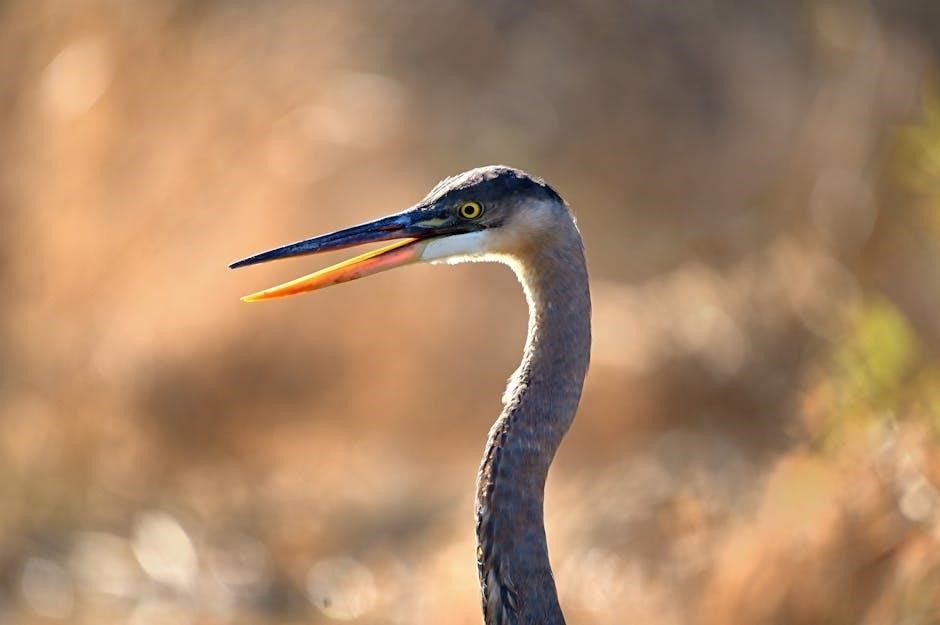
Birding Tips and Resources
Essential tools include binoculars, field guides, and birding apps. Visit hotspots during migration seasons for diverse sightings. Local birding communities offer valuable insights and guided tours.
Essential Gear for Birding
A good pair of binoculars is crucial for clear bird observations. A reliable field guide, organized by bird color or habitat, aids in quick identification. Spotting scopes enhance distant views, while birding apps provide real-time species data. A journal and camera are optional but useful for documenting sightings; Proper clothing and footwear ensure comfort during extended outdoor excursions. These tools collectively enhance the birding experience, making it both enjoyable and productive for enthusiasts of all levels.
Recommended Field Guides and Apps
A field guide featuring 117 Illinois bird species, organized by color, simplifies identification. Apps like Merlin Bird ID and eBird offer real-time data and location-based species lists. Audubon and iBird Plus apps provide detailed descriptions, images, and bird calls. These resources enhance birding efficiency and accuracy, making them indispensable for enthusiasts. They cater to both beginners and experienced birders, ensuring a richer birding experience across Illinois’s diverse habitats.
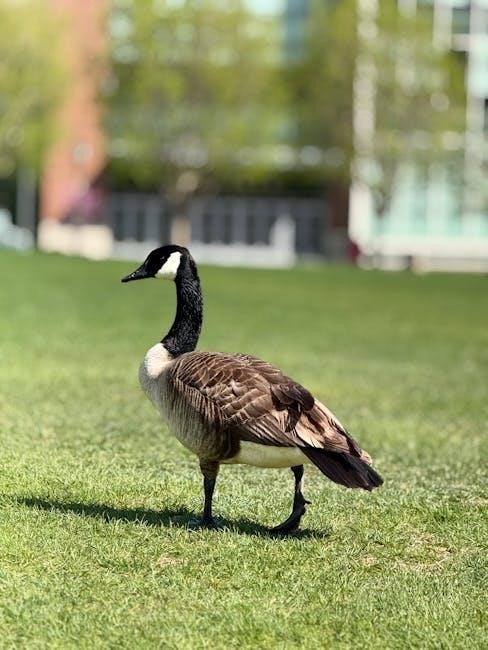
Bird Watching Activities
Bird photography and journaling are popular activities, allowing enthusiasts to capture moments and document observations. These practices enhance enjoyment and contribute to conservation efforts.
Bird Photography and Journaling
Bird photography and journaling are excellent ways to capture and document Illinois birdlife. Photography helps preserve memories and aids in species identification, while journaling records observations, behaviors, and habitats. Both activities foster deeper engagement with nature, enhance learning, and contribute to conservation efforts by raising awareness of bird diversity and ecosystems. They also serve as valuable resources for future birding adventures and research.
Participating in Bird Counts and Surveys
Participating in bird counts and surveys is a rewarding way to contribute to bird conservation. Events like the Christmas Bird Count and breeding bird surveys rely on volunteers to gather data on species populations and distributions. This citizen science effort helps monitor bird health, track migration patterns, and inform conservation strategies. By joining these initiatives, birders support research while gaining hands-on experience in bird identification and habitat assessment, fostering a deeper connection with Illinois’s avifauna.

Glossary of Birding Terms
A collection of key terms essential for bird identification, including plumage, migration, habitat, nesting, fledgling, and molting, helping enthusiasts understand bird behavior and characteristics.
Key Terms for Understanding Bird Behavior and Identification
Understanding bird behavior and identification requires knowledge of specific terms. Plumage refers to a bird’s feathers, which vary by season and age. Migration describes seasonal movements, often driven by food or breeding needs. Habitat denotes the environment where birds live, such as wetlands or forests. Nesting involves breeding and raising young, while fledgling refers to a young bird learning to fly. Molting is the process of shedding feathers for new growth. These terms are essential for accurately identifying and studying Illinois birds, helping enthusiasts recognize species and understand their life cycles.